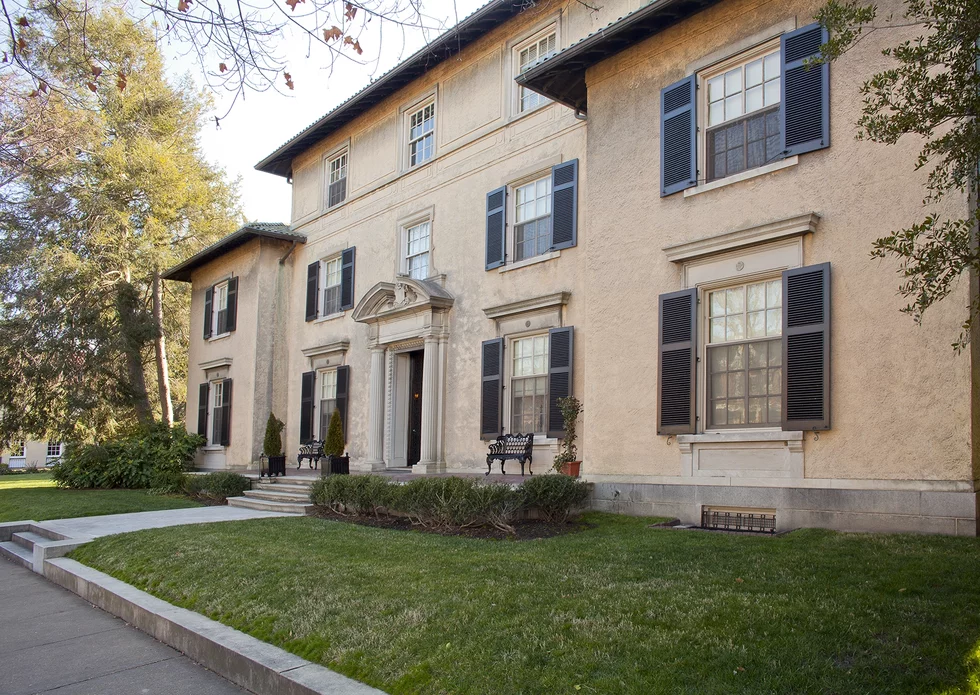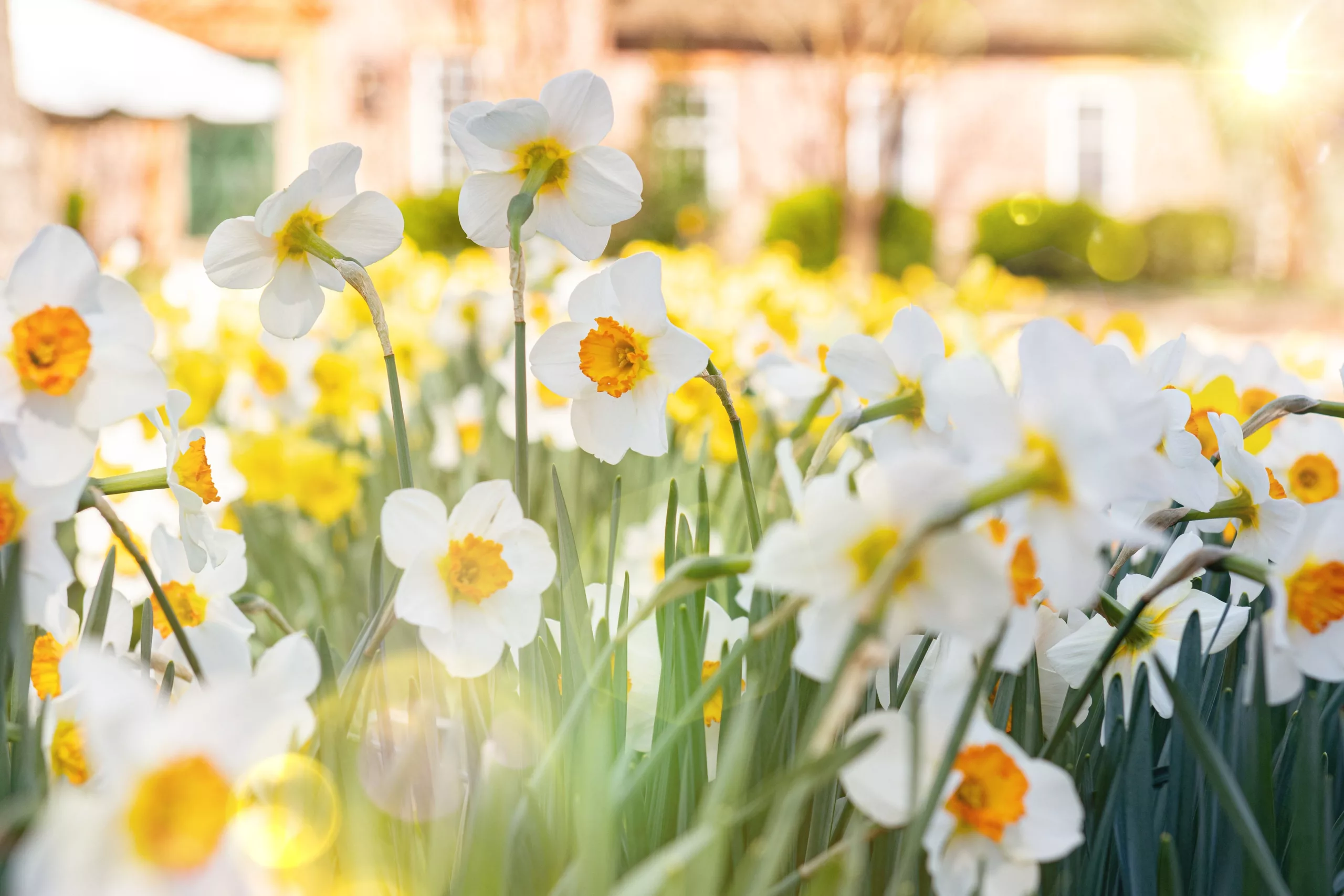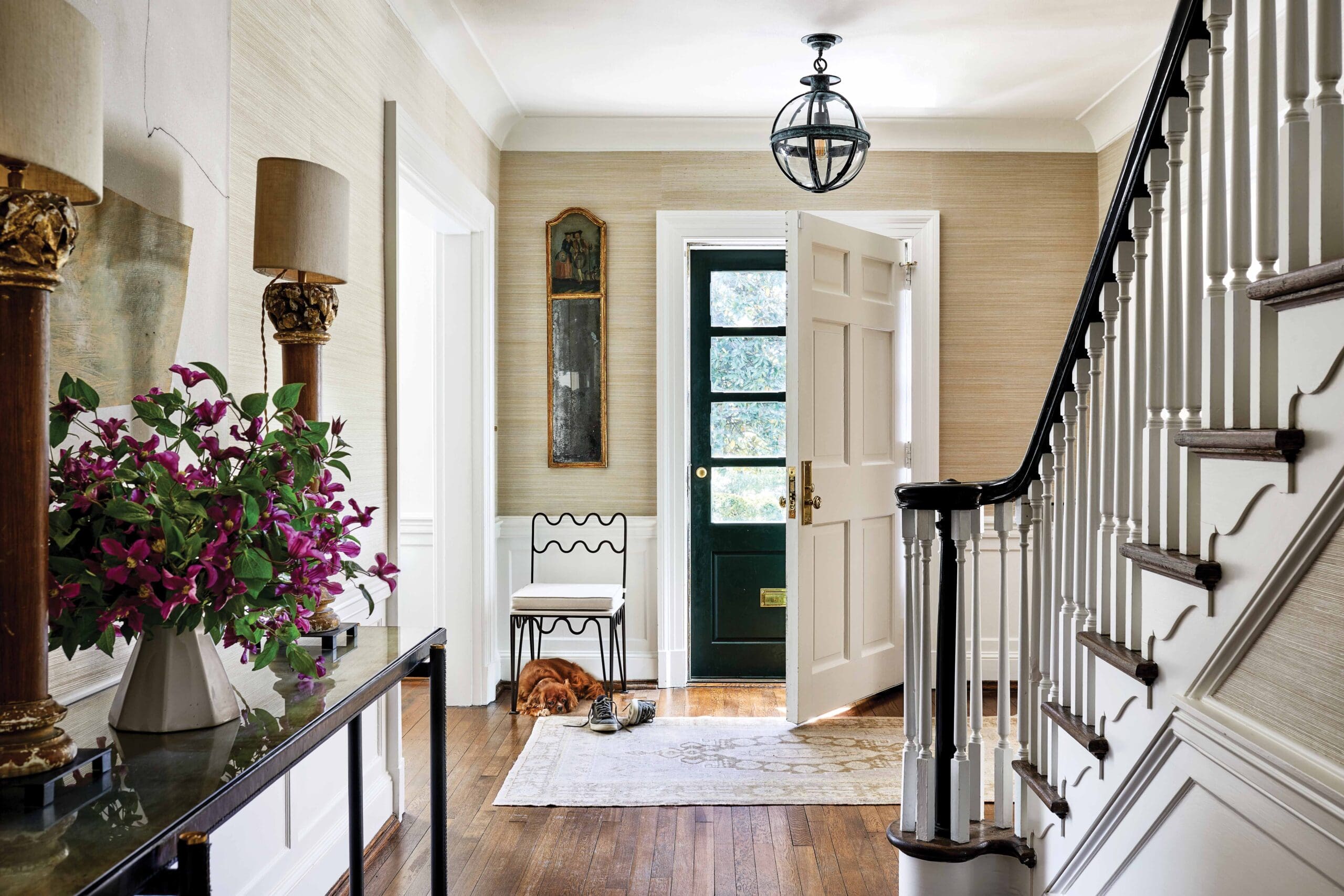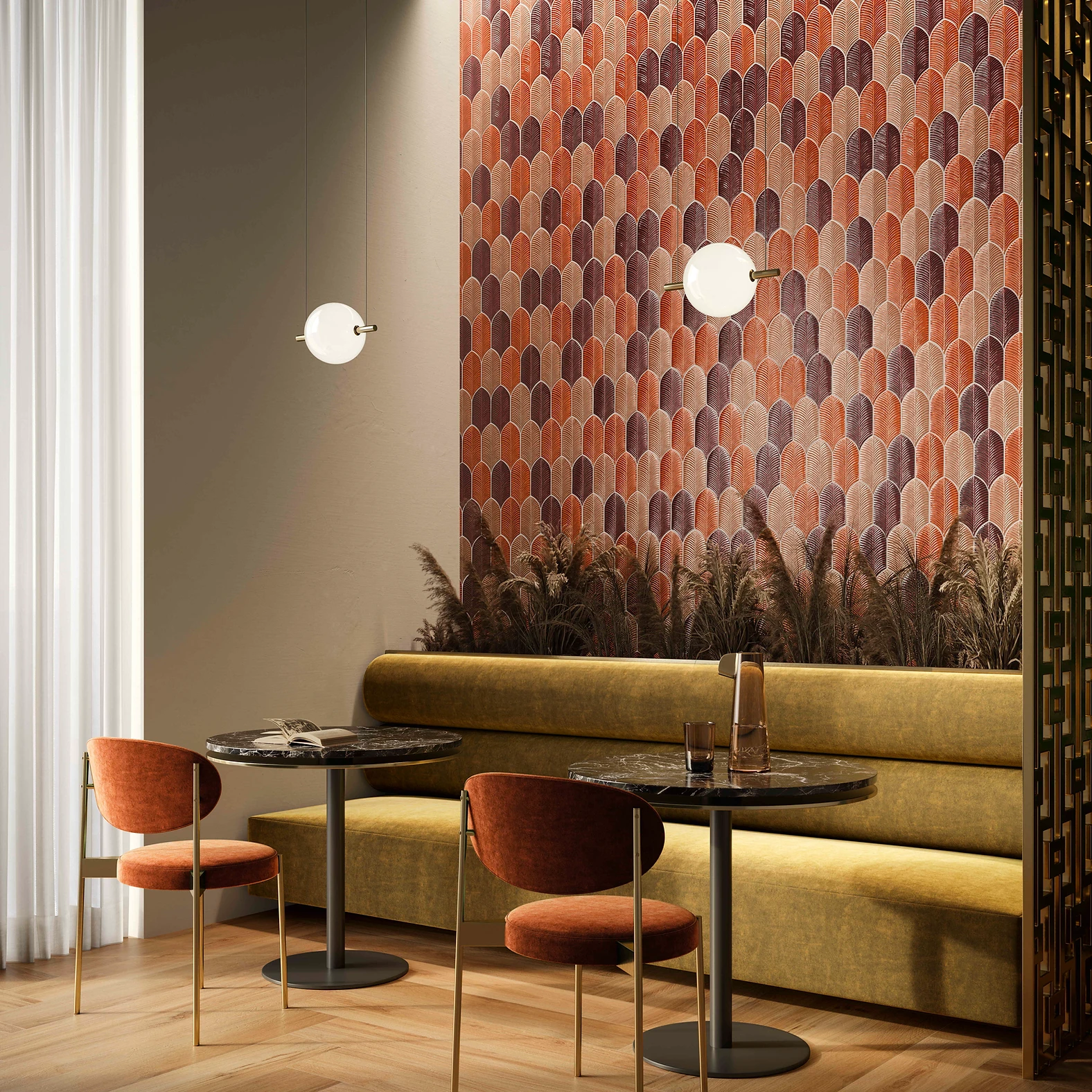Publisher’s Note: This article, originally scheduled to run in the April 2012 issue of Virginia Living, was scuttled due to artistic differences and never appeared in print. Written by Joan Tupponce, it showcases the Italianate villa at 2325 Monument Avenue in its prime, as well as its owner, the formidable preservationist Helen Marie Taylor.
Expressive and delightfully nostalgic, Helen Marie Taylor treats her role as steward of 2325 Monument Avenue in Richmond with respect and reverence. Her late father-in-law was Jaquelin P. Taylor, founder in 1918 of Universal Leaf Tobacco Co., which would become one of the largest consortiums of tobacco dealers in the world,and his wife, Katherine Wall, built the stately Renaissance Revival mansion in 1915. The home is now under the watchful eye of Mrs. Taylor, who married J. P. Taylor’s son, Jaquelin E. Taylor, her sixth cousin, in 1964.

Helen Marie Taylor, pictured here in 2012, relaxing in the sunroom at her house at 2325 Monument Avenue.
Since the death of her husband in 1985, Mrs. Taylor has vowed to keep her father-in-law’s architectural legacy a mainstay of Richmond’s most beautiful avenue. “I’m a preservationist and a sentimentalist,” she says with conviction. “I need to do everything I can to preserve it.”
Mrs. Taylor is keen to preserve not just the 12,000-square foot house, which was designed by renowned architect W. Duncan Lee and landscape architect Charles Gillette, but also the story of the man who built it; a man known as one of the “founding fathers of the modern tobacco industry.”

Mr. Taylor’s office is paneled in oak with an intricately carved fireplace in the Tudor Revival style. The room’s unique barrel-vaulted ceiling features botanically inspired plaster in relief.

The front parlor, in pastel blue, features the elaborate molding and trim that the house is famous for and Louis XVI-inspired furniture.

A formal dining room includes a large fireplace and table set for eight. Elaborate details, like the gilded molding and trim, add to the room’s elegance. Light fixtures are original from Tiffany Studios.

Peach and green are the predominant colors in the master bedroom, which includes matching four-poster beds and furniture groups for casual seating. The floral fabric complements the color palette.
An enthusiastic oral historian and a self-proclaimed legend bearer, Mrs. Taylor tells the story of how J. P. Taylor left school and Meadow Farm, his ancestral home in Orange County located on land that was acquired in the 1720s through a Crown grant, at the age of 16 to help earn money for his family. His father was a Virginia planter and gentleman, but like many others in the South, he struggled to make ends meet following the Civil War. J.P. Taylor went to Richmond and started working at Alexander Cameron and Company, a tobacco company, as a laborer for a salary of $4 a week, money he would send home to his family. Taylor slept on a cot in the basement of the Cameron’s home and would get up at dawn to unload the rat traps in the lofts and warehouses and re-bait them. He used his time at the company to learn the tobacco business.
Later, seeing his father struggle to get a load of tobacco to market, he came up with the idea to become a representative for the tobacco farmers in the marketplace. He moved to Danville at the age of 20 to work as a tobacco dealer. That led him to Henderson, North Carolina, where, before turning 21 he founded the tobacco dealing enterprise, J. P. Taylor Company. He was able to borrow enough money to “buy in” and save Meadow Farm the night before it was to go on the auction block for unpaid taxes.

The front-facing exterior of 2325 Monument Avenue resembles an Italianate villa.
Later in life, Taylor spoke about the necessity of leaving school and working to help save his ancestral home, calling it the “greatest gift” he had received in his life.
In 1918, after moving back to Richmond, he founded Universal Leaf Tobacco Company, which achieved international status. Taylor was named to be in the American National Business Hall of Fame for his accomplishments. His contribution was important to the country because he was a Southerner from the first generation immediately following the Civil War to operate on a global basis. Mrs. Taylor points out that Robert E. Lee had “urged the people, especially the young people, to put the war years behind them, to heal the wounds, and become a part of the mainstream of America once more.” J.P. Taylor, she says, bridged the abyss between the war-ravaged South and its prosperous future.

Jaquelin E. Taylor

Helen Marie Taylor

The Taylor home under construction

Jaquelin P. Taylor
In 1912, soon after moving his family back to Richmond, Mrs. Taylor says her father-in-law selected the site for his home in the shadow of the Jefferson Davis Monument because his lineage dates back to the former president: Davis had married Sarah Knox Taylor, President Zachary Taylor’s daughter. The Taylors also are kin to the country’s fourth president, James Madison. At the time, anyone buying property on the avenue, which just 20 years prior to the land sales was a tobacco field, had to pledge to spend at least $7,000 on construction.
Mrs. Taylor’s father-in-law bought two lots and ultimately spent more than $11,000 building his home.

Helen Marie Taylor in her signature chiffon.
A philanthropist, J. P. Taylor was not an extravagant spender concerned with building a prestigious home; he wanted to build a noble home. Mrs. Taylor recounts the story of a party held by her father- and mother-in-law. At the end of the evening, one of the guests, a young lady named Mary Ross Reed, came to say goodnight to the couple. She told them of the good time that she had and mentioned they had a pretty house. J. P. Taylor took her hand in his and held it and said “Mary Ross I am so glad you have had a nice time. I have tried to build a noble house. I hope you young people will build noble homes of your own and have noble lives and noble careers.” Miss Reed later married William T. Reed and the couple built Sabot Hill in Manakin Sabot.
J.P. Taylor would later take part in other successful ventures. He was a founder of the Carolina Telephone and Telegraph Co. and the Virginia Trust Co. and is credited with serving as a catalyst for establishing the Virginia Forestry Department, says Mrs. Taylor.
J.P. Taylor turned to Duncan Lee, who also designed the interior renovations for the Virginia Executive Mansion as well as Carters Grove in Williamsburg, and Charles Gillette, who is known for creating the garden at the Virginia House, as well as the grounds of the University of Richmond, to design his home. When Lee was designing the Taylor mansion, Lee took J. P. Taylor’s wishes to make his a noble home to heart. There were other influences as well such as The Villa Medici in Rome, which was built in the 1550s. “The front of the house reflects the villa,” says Edwin Slipek, writer and architectural historian who often takes his students to the home to study the architecture, a practice that Mrs. Taylor encourages. “The street side is very flat and relatively plain. The garden side with a Roman arch is more elaborate with a loggia across the back.” Lee also may have drawn inspiration from some of his other interior renovations, which included the White House in Washington, D.C.

A mosaic tile fountain is the centerpiece of the sunroom.
To give the home an occasional sparkle from the sun, Lee mixed mica into the stucco/cement façade. “The surface dances throughout the day and changes hues in various lights,” observes Slipek. One of Lee’s favorite creations was the beautiful iron door that holds the Taylor shield. The door was to be more ornate but J. P. Taylor had Lee revise it to reflect a simpler style. Mrs. Taylor explains that Lee’s son would walk with his father down the avenue as his father pointed out the houses he had designed, stopping at the Taylor mansion to point out the door and remark, “This is one of the best things I have done.” Author Harry David who is writing a book on Lee’s architecture observes, “The Taylor home is lavish and elegantly restrained. Lee knew when to be lavish and when to pull back.”
Earlier this year, Mrs. Taylor had restoration artist and guilder Nancy Beck apply 23-karat gold leaf to J. P. Taylor’s initials on the door to make them stand out. “They had never been in gold before,” says Beck. “They are in excellent shape.”
The mansion’s melding of centuries and generations gives it unique character. The spacious foyer and curved stairway, and 21 traditionally styled rooms in the three-story home echo the past, and reflect a time when people gathered for grand parties and shared conversations over tea. Mrs. Taylor and her husband, who signed his name Jaques’ took up residence at the mansion in 1965 and there raised four sons, two of whom Mrs. Taylor brought from her first marriage to George B. Munroe.
The home’s unique ceilings and light fixtures were designed by Louis Comfort Tiffany, who is remembered for his work in stained glass as well as his art nouveau interior designs. Mrs. Taylor still possesses the letter from Tiffany to Lee with a copy to J. P. Taylor confirming the order.

The wrought-iron and glass double front doors were features Duncan Lee was exceptionally proud of.
The Monument Avenue property is one of three homes owned by Mrs. Taylor and her husband, who served as director of Universal Leaf from 1944 to his retirement in 1974. The two restored Bloomsbury, the circa-1722 original Taylor family home and the oldest dwelling in Orange County, which is now a private museum available to tour by appointment, and also Mead- ow Farm, built in 1729 by Zachary Taylor and Elizabeth Lee, grandparents of President Zachary Taylor, and the great aunt and uncle of President James Monroe. The couple also founded the James Madison Museum in Orange, and Mrs. Taylor served as president of the James Monroe Memorial Foundation for more than 25 years. She was recently elected president Emeritus of the James Madison Museum and in 2010 was commended for her service to the Commonwealth with a Joint Resolution of the House and Senate of the Virginia General Assembly.
The Taylor mansion on Monument reflects Mrs. Taylor’s history as well as her husband’s family’s legacy. Her photos with former Prime Minister Margaret Thatcher and President Ronald Reagan are found in the same rooms as portraits of the Taylor family and the wicker wing chair that J. P. Taylor favored in the sun-drenched solarium. Her eloquent storytelling can be attributed to her theatrical background. A graduate of the Oxford University Dramatic Society, Mrs. Taylor founded the Shakespeare Theatre of Stratford in Connecticut and earlier in her career received a Best Young Actress Award for her portrayal of Ophelia in Hamlet in New York City.
Mrs. Taylor’s historical and political interests were inspired by her grandmother, Sallie Sears Taylor of Waco, Texas, who used to tell her grand-daughter glorious stories from the past. “American history was rolled out like a tapestry,” says Mrs. Taylor, who also grew up in Waco. Mrs. Taylor served in the Reagan administration as ranking U.S. Delegate on the Cultural and Communications Committee at the United States Educational, Scientific and Cultural Organization (UNESCO) meeting in Paris in 1983 and as a U.S. representative to the United Nations in 1986. Mrs. Taylor also founded The Helen Marie Taylor Museum: The Life and History of Waco. In February, the Monument Avenue Preservation Society honored Mrs. Taylor for her years of work preserving Monument Avenue.
A passionate preservationist, Mrs. Taylor once fended off a city-owned paving machine in 1968 that was getting ready to pave over the original asphalt blocks on Monument Avenue near her home. As the paver began its journey, she rushed out of the house to stop its forward movement. “I put my arms out and said you can’t come any further,” she recalls, noting that a photographer from the newspaper saw her and snapped her picture. “That story was the second most important news story of the year. It had energy to it. It had the effect of kicking off the preservation movement.”

In the dining room, the Regency mirror is flanked by gilded sconces. The fireplace mantel is cast stone and features intricate details that include garlands, fruit, and urns.

A generous hearth and elaborate custom mantels are signatures of the fireplaces at 2335 Monument Avenue.

The Taylors’ collection of sterling, crystal, and china in the dining room add an unparalleled elegance, where the exceptional attention to architectural details are hallmarks.

Fixtures and plumbing in the master bath were way ahead of their time. A ribcage shower, sitz bath, and soaking tub signaled luxury.

A sweeping staircase anchors the foyer, where elaborate molding and stately columns welcome visitors.

A mosaic tile fountain is the centerpiece of the sunroom.

The library is Neoclassical in design, with vibrant orange walls that provide contrast against the room’s lighter molding and dark mahogany furniture.

The carved oak mantel with a cast stone inset are focal points in Mr.Taylor’s office. Both are typical of the Tudor Revival style.
Perhaps her biggest preservation project, though, has been the Taylor home on Monument Avenue. The mansion suffered damages in 1995 not only from a nearby fire but also heavy rains from two hurricanes and an ice storm. The home sustained smoke damage. Dried out ashes from the fire got underneath the tile on the roof and created a sludge that slowly seeped into the walls and ceilings of some of the rooms, causing substantial damages. Mrs. Taylor was unable to live in the home for several years. She has been restoring the home room by room; the breakfast room and the dining room were her two latest projects.

The elaborate bronze gates were typical of grand homes of the early 20th century.
The elaborate wrought iron doors were typical of grand homes of the early 20th century.
A barrel-vaulted ceiling, originally designed by Tiffany, highlights the light-filled pistachio-and-white breakfast room. Michael Greer, decorator of the White House under Jackie Kennedy, told Mrs. Taylor in 1965 that the breakfast room was the “most exquisite small Adam [style] room in America and I know them all.” This 18th-century neoclassical style was inspired by brothers Robert and James Adam. William McArthur was hired to remove the damaged canvas from the walls and replace it and to also fix the ceilings of the room. Beck, who gilded the shield on the front door, spent over 245 hours hand-painting and restoring Wedgewood-style flowers and a cameo on the ceiling.
When it came to restoring the mansion’s magnificent dining room, the last of the remaining extensive restoration projects, Mrs. Taylor wanted to make a statement without being grandiose. As with other rooms in the house, the dining room holds mementos such as an 1850 Steinway piano, a portrait of family relative Lord Cholmondeley, Mrs. Taylor’s ancestor on her mother’s side who was Lord Privy Seal and Chancellor of the Exchequer, and the original dining furniture from J. P. Taylor, who had received it from his great uncle, Jaquelin Plummer Taylor, for whom he was named. She enlisted Beck to help highlight the special features in the previously all-beige room. “All of the relief work was painted the exact same color and didn’t stand out,” Beck says, adding that she used colors of gold and bronze to bring sheen and life to the room and also marbleized the room’s 22 pilasters. The work was completed in 2011.
Mrs. Taylor would like to one day make the home a public space like the Virginia House or Agecroft Hall.
“I hope my father-in-law would have liked it,” Mrs. Taylor says of the restoration. “This house is due to his vision and his hard work. He was one of my primary heroes. I never knew him personally but I feel like I have known him all my life. I’ve tried to honor his noble house.”










